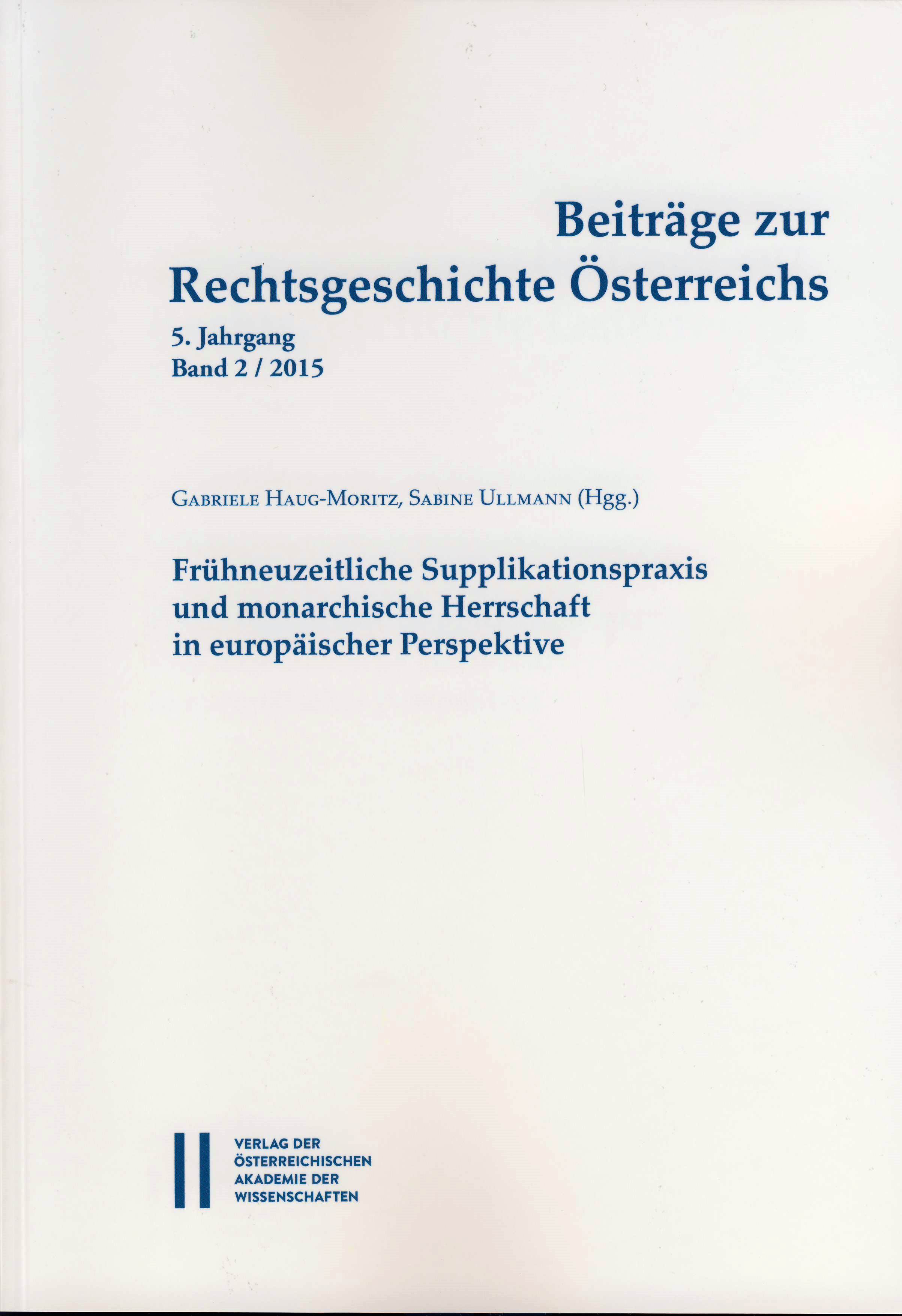
Beiträge zur Rechtsgeschichte Österreichs 2 / 2015, pp. 283-296, 2015/12/11
Frühneuzeitliche Supplikationspraxis und monarchische Herrschaft in europäischer Perspektive

The term supplication, which has been the term most commonly used since the late 15th century, describes a written appeal for a favor to which the supplicant has no legal claim. The text type ‘supplication’ can be seen as essential to understanding the relation between sovereign and subjects, authorities and subordinates in the Pre-Modern era. Since the Late Middle Ages this relationship had been significant in forming the characteristics, functioning and dynamics of sovereignty. Whereas Early Modern Period researchers have been studying this topic a lot in the recent years, medievalists still rarely do so. The present paper deals with the beginning of king Maximilian’s reign (the 1490s) and discusses how the royal chancery responded to supplications addressed to the sovereign by his subjects. The study was based on the petitions preserved in the Viennese state archives and focuses on administrative procedures but also on the strategies used by petitioners to obtain the requested favor.
Keywords: supplications, petitioning, Maximilian I, Holy Roman Empire, administration, social history